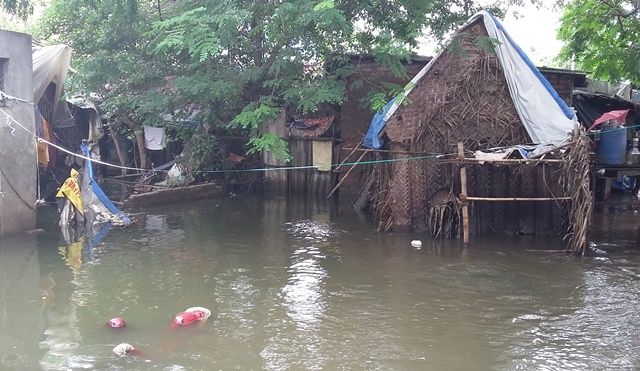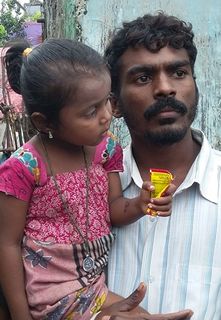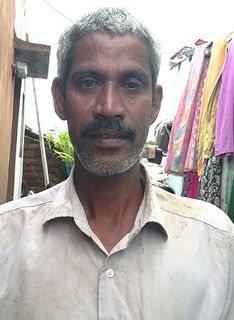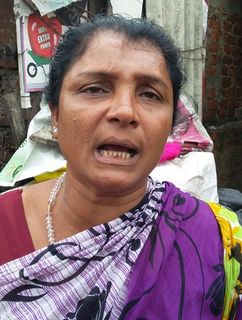Joe Williams
Ethiopia is facing its worst drought in over a decade, following a poor rainy season due to a particularly strong El Nino this year. The number of people receiving emergency food assistance has nearly doubled, from 4.55 million in August to 8.2 million in October. Schools, hospitals, and other critical facilities have been forced to close due to water and food shortages, and 350,000 children are experiencing acute malnutrition.
The UN Office for Coordination of Humanitarian Affairs says the level of need has already exceeded that produced by the 2011 drought in the Horn of Africa that caused 200,000 deaths in neighboring Somalia, and is comparing the situation to the droughts of the 1980s, which devastated the country and made Ethiopia synonymous with hunger in the minds of many around the world. It expects the number of Ethiopians requiring food assistance to rise to 15 million in 2016.
The official response of the government has been to deny the severity of the crisis. Speaking to Reuters, Finance Minister Abdulaziz Mohammed said, “Regarding the impact on economic growth, the drought-affected areas are peripheral and pastoral communities in the southern and eastern parts of the country … normally, those parts of the country contribute not more than 5 percent to our GDP. On the other hand, we expect harvest to be more this year.” He added that no funds will be diverted from other budget items to bring the crisis under control.
This is fully in line with the economic mismanagement and corruption that have characterized the US-backed Ethiopian Peoples’ Revolutionary Democratic Front (EPRDF) government since it seized power in 1991. Far from being revolutionary or democratic, it is considered one of the most corrupt capitalist governments in the world, with Transparency International ranking it 111th out of 177. Nearly 40 percent of the population lives on less than $1.25 a day, and the UN ranks Ethiopia 174th out of 187 countries for human development.
Despite chronic food shortages, agricultural products constitute nearly 80 percent of the country’s exports. Coffee is the largest export product, followed by meat, livestock, pulses (beans, legumes, etc.) and grains. Much of Ethiopia’s arable land is used to grow non-food products, such as flowers and palm oil, almost all of which is for export. About 80 percent of the workforce is in agriculture. Ethiopia has the highest livestock population in Africa, at 150 million animals, but its cattle are of the zebu sub-species, which produces low yields of milk and meat.
Aside from political and economic mismanagement, there are natural reasons for Ethiopia’s frequent food shortages. Significant amounts of fertile land are difficult for farmers to develop because they are swarming with deadly insects, including malaria-carrying mosquitos. The mountainous landscape makes irrigation difficult, so farmers rely solely on rain to water their crops, which comes only during the rainy season lasting from July to September. In years like 2015, when there were only three days of rain during the season, crops are doomed to failure. If the rains are substantial, on the other hand, Ethiopia’s mountainous terrain ensures that the topsoil, dry and crusty from not absorbing any rain for most of the year, will wash into the Nile, where it flows into Egypt and produces bumper crops for farmers there.
The 2011 drought led to a societal breakdown in Somalia, where already existing tensions between Islamist forces and the Mogadishu government erupted into outright warfare. Ultimately, US-backed African Union forces, led by Kenya, were sent in to stabilize the country. Today, Ethiopian troops play a leading role in propping up Somalia’s puppet government, highlighting the challenges posed to US hegemony in the region by the current crisis.
During a visit to Addis Ababa this summer, Obama hailed the regime of Hailemariam Desalegn as an “outstanding partner” in the war on terror. He referred to it as “democratically elected” just two months after a blatantly rigged election in which the EPRDF won all 546 seats in Parliament. One can expect that Obama will continue to support the EPRDF’s repressive policies as long as the regime ensures, in his words, that the US doesn’t “need to send our own Marines in to do the fighting. The Ethiopians are tough fighters.”
Underlying Obama’s visit were fears that the government, and its “tough fighters,” are being courted by China, which has surpassed the US and become Africa’s top trade partner. Chinese trade with Africa has grown rapidly since 2009, while US trade has declined by nearly half, from $125 billion to $70 billion. In Ethiopia, this economic activity comes in the form of badly needed infrastructure investments. Ethiopia’s lack of reliable roads and bridges is often cited as a major barrier to economic development, and China’s willingness to construct them may undermine the ability of the US to maintain the allegiance of the country’s elites.
The capital city’s brand new subway system, as well as the African Union headquarters located there, were financed entirely by China. The US is also concerned that its “pivot to Asia” will be threatened by plans to build the LAPSSET rail and transportation corridor, which will link Kenya, Uganda, Burundi, Ethiopia, Rwanda, and South Sudan and allow the easy export of goods and raw materials back to China.
The US and its allies have attempted to compete with China by investing in electricity production. The government recently signed a $1.55 billion contract with a subsidiary of the Blackstone Group to build an oil and gas pipeline to Djibouti, and now that company is considering investing in wind and hydro power.
In 2013, US-Icelandic firm Reykjavic Geothermal agreed to invest $4 billion in geothermal energy production. USAID has coordinated many such transactions through its Power Africa program, which “works with African governments and private sector partners to remove barriers that impede sustainable energy development in sub-Saharan Africa and unlock the substantial wind, solar, hydropower, natural gas, biomass, and geothermal resources on the continent.” Power Africa has nearly a hundred “private partners” in its effort to “unlock” Africa’s resources, including General Electric, Goldman Sachs, and the Shell Foundation.
As these efforts have failed to tip Ethiopia’s trade balance away from China and toward the West, the US will surely exploit the crisis produced by the drought to increase its military presence in the region.





